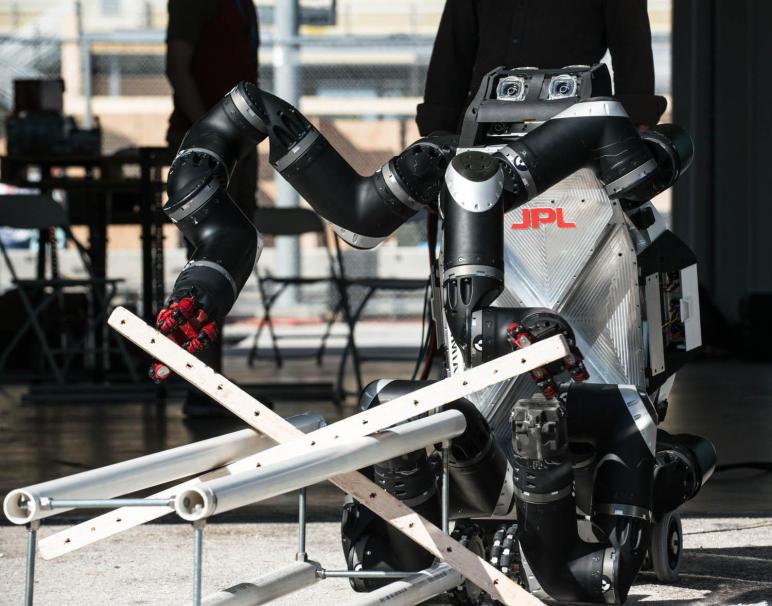Robots to the Rescue
When disasters strike, first responders—often highly trained emergency medical staff—risk their lives to rescue victims and secure damaged structures. However, an apelike robot named RoboSimian could one day provide a safer alternative. RoboSimian is JPL’s entry in the Defense Advanced Research Projects Agency (DARPA) Robotics Challenge. The competition, motivated by the radiation dangers posed to response crews at Japan’s Fukushima Daiichi nuclear power station after a tsunami struck in 2011, challenges teams to design a robot that can perform many of the same emergency procedures as a human rescue worker.
Composed of researchers from JPL, Caltech, and UC Santa Barbara, the RoboSimian team crafted a machine featuring four equally strong and dexterous limbs that allow the robot to drive a vehicle, climb over debris, turn valves, and even cut through walls when instructed by a human operator. At the final competition this June in Pomona, RoboSimian’s performances on these tasks will be judged against at least 10 other competitors. Scoring will also include the competitors’ performance during a surprise task that won’t be revealed until the day of the competition.
Although robotic rescue workers might seem outlandish now, the reality might be closer than we think. Several previous DARPA challenges of the last decade—in which Caltech and JPL have both participated—led directly to advancements in the driverless car technologies that are being explored today.
Photo courtesy of JPL-Caltech

